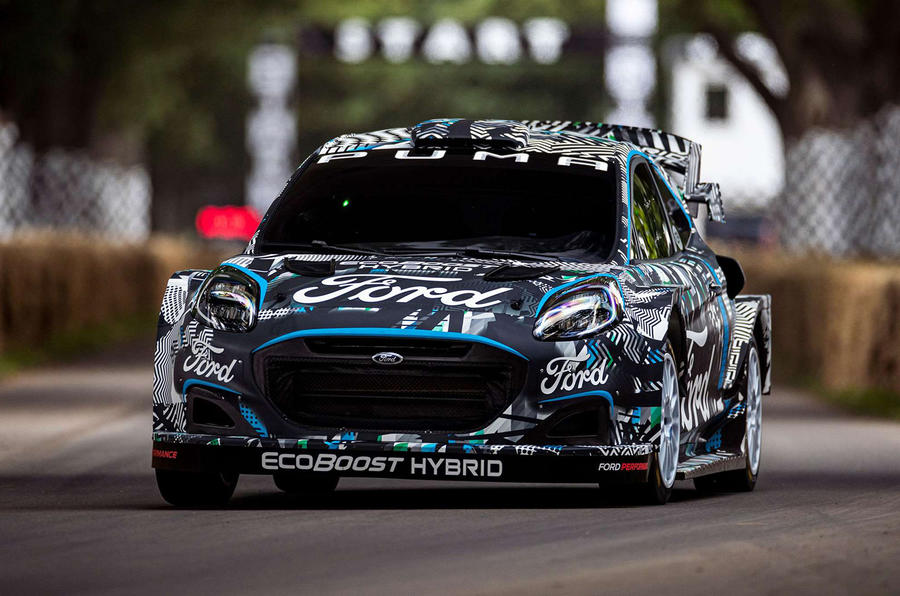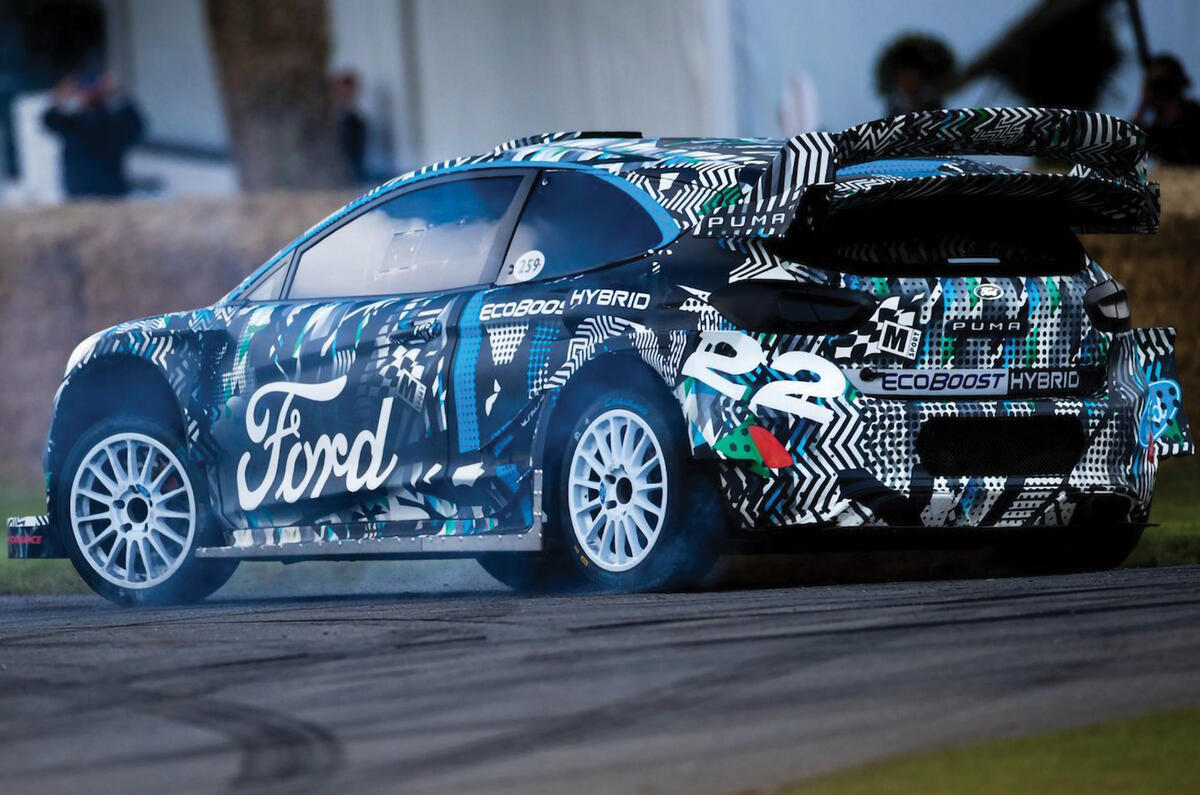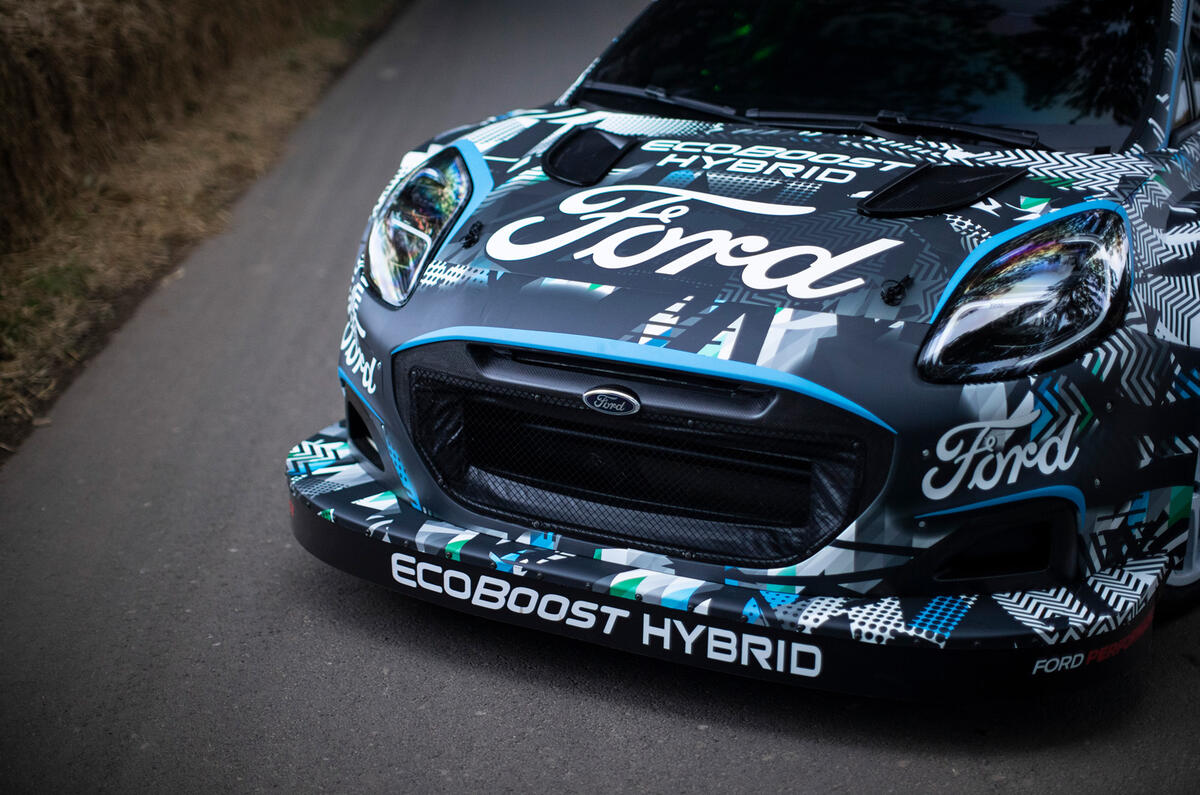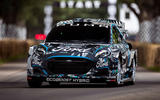Malcolm Wilson has been there, seen it and done it all in a rally career spanning more than 40 years. This is a man who rallied through the fabled Group B era, has represented Ford in the World Rally Championship in one shape or form through three decades and experienced the buzz (and stress) of running both Colin McRae and Carlos Sainz in the same team.
So what does he really think about his sport’s embrace of hybrid technology from 2022? Wilson is hard to impress. He is from Cumbria, after all. Has it genuinely, honestly got his juices flowing?
“Honestly, yeah,” he replies with a smile. “After I went to spectate up in our forest during testing, I was excited, absolutely. There’s no question that it’s rallying’s biggest revolution… probably even bigger than the Group B era.”
At the recent Goodwood Festival of Speed, Wilson’s M-Sport team and Ford revealed the new Puma Rally1 that will compete in the new-look WRC next year. The compact crossover, which will replace the Fiesta supermini, popped and banged its way up the hillclimb with the best of them, offering an all too familiar and well-loved soundtrack. When Formula 1 turned full hybrid in 2014, the complaints drowned out the feeble sound of the turbocharged 1.6-litre V6s, but it should be a different story on the WRC’s special stages.
“It’s a sensible step for rallying, because everyone knows how difficult it is to accept change, and we don’t want to lose the noise and atmosphere,” says M-Sport team principal Richard Millener. “We’re reflecting the cars that are currently out there in showrooms and on the road. It’s an exciting opportunity for us.”

Given the way of the world, it’s beyond time that rallying embraced hybrid technology, if nothing else to ensure that the WRC’s three manufacturers (Ford, Hyundai and Toyota) remain committed while giving others on the outside a reason to consider diving in.
Mark Rushbrook, global director of Ford Performance, came over from the US to witness the Puma Rally1’s debut. “Knowing about the electrification we have coming on all of our road cars, with mild hybrids, plug-in hybrids and fully electric vehicles, we’ve wanted to compete somewhere with electrification,” he says. “Looking at the different [motorsport] series that exist with hybrid or fully electric [cars] and what are still to come, we were really happy with what the FIA and WRC put together as the new car for 2022. And as we’ve always partnered with M-Sport in the rally world, we wanted to continue that relationship, with an opportunity to do a new car with new rules.”






































Add your comment